Last updated: January 23, 2025
Article
Wolf Ecology Basics
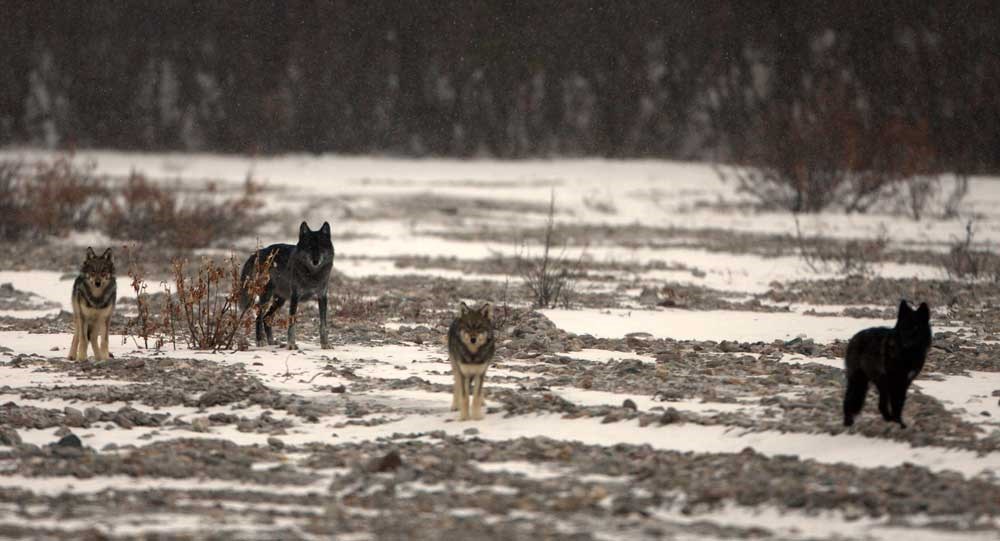
NPS Photo / Steve Arthur
Wolves begin mating when they are 2 to 3 years old, sometimes establishing lifelong mates. In some larger packs, more than one adult female may breed and produce pups. Wolves usually rear their pups in dens for the first six weeks. Dens are often used year after year, but wolves may also dig new dens or use some other type of shelter, such as a cave.
Pups are born in early spring and are cared for by the entire pack. They depend on their mother's milk for the first month, and then they are gradually weaned and fed regurgitated meat by other pack members. By 7 to 8 months of age, when almost fully grown, the pups begin traveling with the adults.
Leaving Home
The turnover of individuals in packs is common. Often, after 1 or 2 years of age, a young wolf will leave the area where they were born unless a space is created by the death of an older wolf. If a dispersing wolf can find a mate, the new pair can form a new pack if they maintain an unclaimed area with sufficient food over time. Lone dispersing wolves have traveled as far as 500 miles in search of a new home.
Established wolf packs usually live within a specific territory. Territories range in size depending on how much prey is available and seasonal prey movement. Packs use a traditional area and defend it from other wolves. Their ability to travel over large areas to seek out vulnerable prey makes wolves good hunters.
Wolves may travel as far as 30 miles in a day. Although they usually trot along at 5 mph, wolves can attain speeds as high as 45 miles per hour for short distances. Indirectly, wolves support a wide variety of other animal populations. Ravens, foxes, wolverines, and even bears feed on the remains of animals killed by wolves. Wolves also help regulate the balance between ungulates (hoofed animals) and their food supply.
Howling
Wolves are noted for their distinctive howl, which they use as a form of communication.
Biologists do not know all of the reasons why wolves howl, but they may do so before and after a hunt, to sound an alarm, and to locate other members of the pack when separated. Wolves howl more frequently in the evening and early morning, especially during winter breeding and pup rearing. Howling is also one way that packs warn other wolves to stay out of their territory.
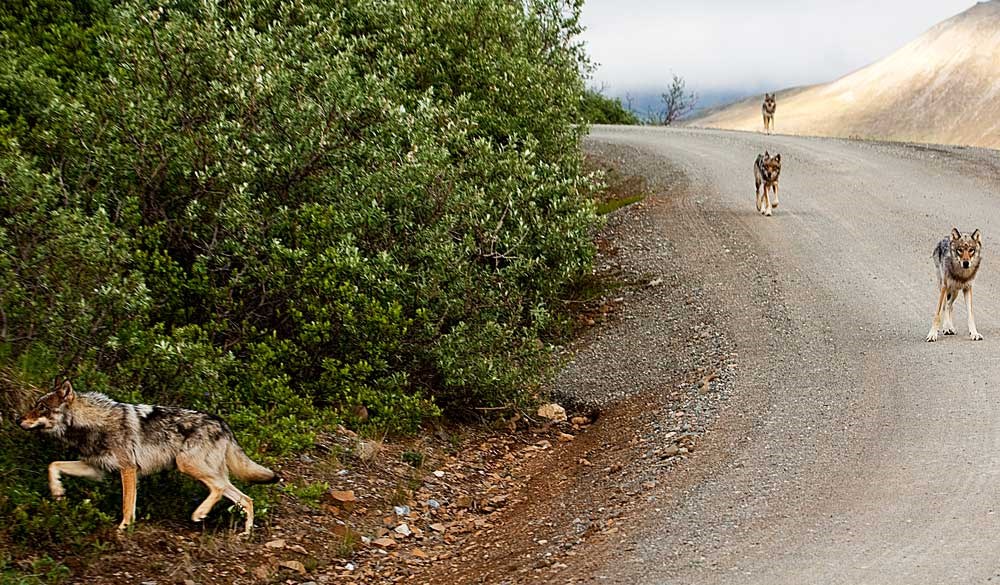
NPS Photo / Nathan Kostegian
Leader of the Pack
The term “alpha” originates from studies of wolf social dynamics in captive wolf packs. In nature, wolf packs are a family unit, consisting of a mated pair and their offspring, though occasionally, variations to this pack structure exist.
In a wolf pack, the parents (breeders) are naturally dominant to their offspring. Dominance cues include:
- Leading pack travel
- Posturing
- Scent marking
- Food ownership
Wolf Territories
"Territoriality" implies defense of an area, and many researchers create maps that help graphically illustrate the range, or territory, of a given wolf pack.
However, the area defended is not as clearly defined as a map may indicate. Territory shifts can occur seasonally or year to year. This constantly shifting mosaic of pack territories is seen especially in exploited populations (e.g., areas where humans cause wolf mortality, which in turn causes territories to shift as neighboring wolves encroach on territories abandoned or devoid of its former pack).
Territory size seems to be dependent on the density and availability of prey. For example, wolf territories in Minnesota contain a high density of white-tailed deer, so wolves don’t need to travel far to find food. However, prey density in Alaska is relatively low, so wolves may need larger territories in order to find sufficient prey.
Also notable is that neighboring territories may overlap. However, while the same area may be used by several packs, use will not occur at the same time.
Wolves in Parks
-
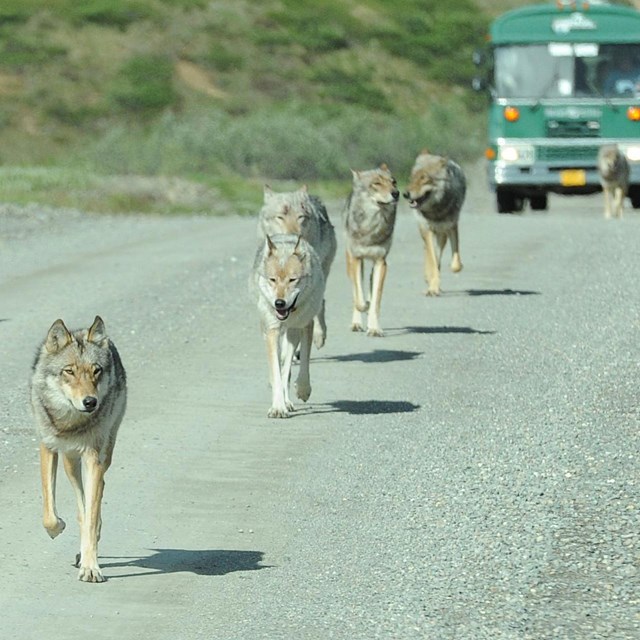 Wolves at Denali
Wolves at DenaliLearn more about wolves and wolf research at Denali National Park, in Alaska.
-
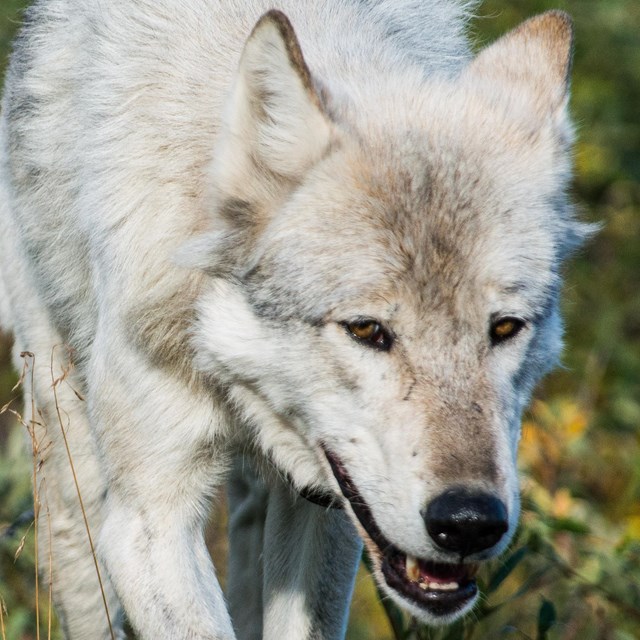 Wolves at Yellowstone
Wolves at YellowstoneLearn about wolves and wolf research at Yellowstone National Park
-
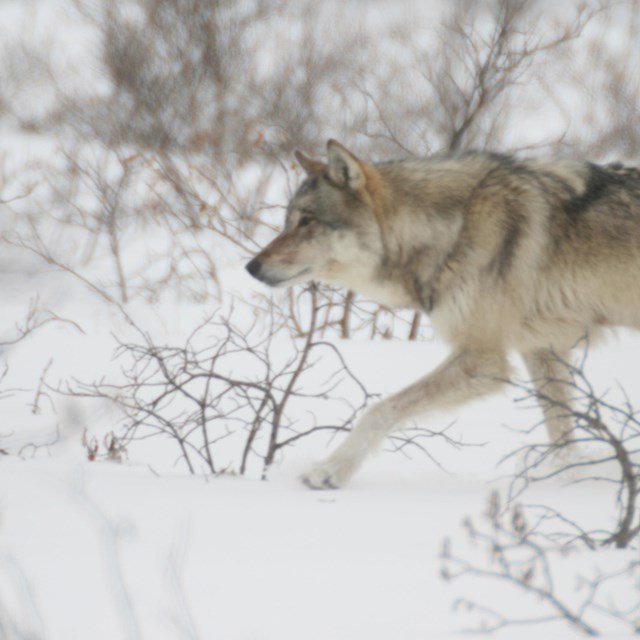 Wolves at Yukon-Charley Rivers
Wolves at Yukon-Charley RiversLearn more about wolves and wolf research at Yukon-Charley Rivers National Preserve, in Alaska.
-
 Wolves at Lake Clark
Wolves at Lake ClarkLearn more about wolves and wolf research at Lake Clark National Park, in Alaska.
-
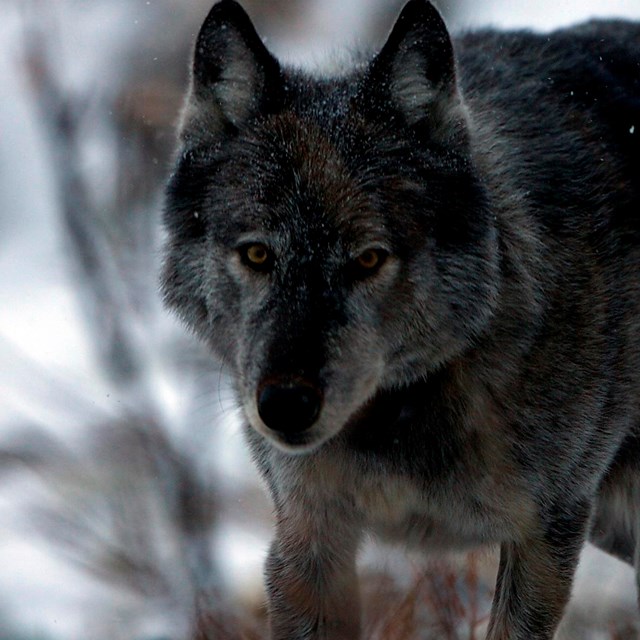 Wolves at Voyageurs
Wolves at VoyageursLearn more about wolves and wolf research at Voyageurs National Park, in Minnesota.
-
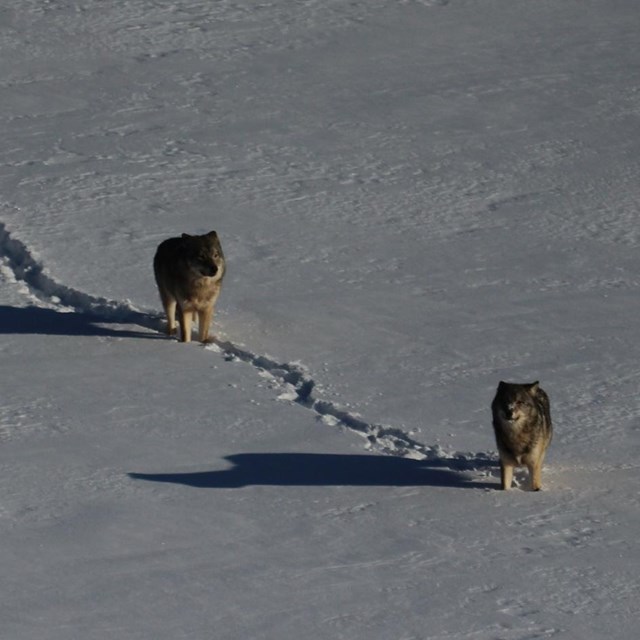 Wolves at Isle Royale
Wolves at Isle RoyaleLearn more about wolves and wolf research at Isle Royale National Park, in Michigan.
